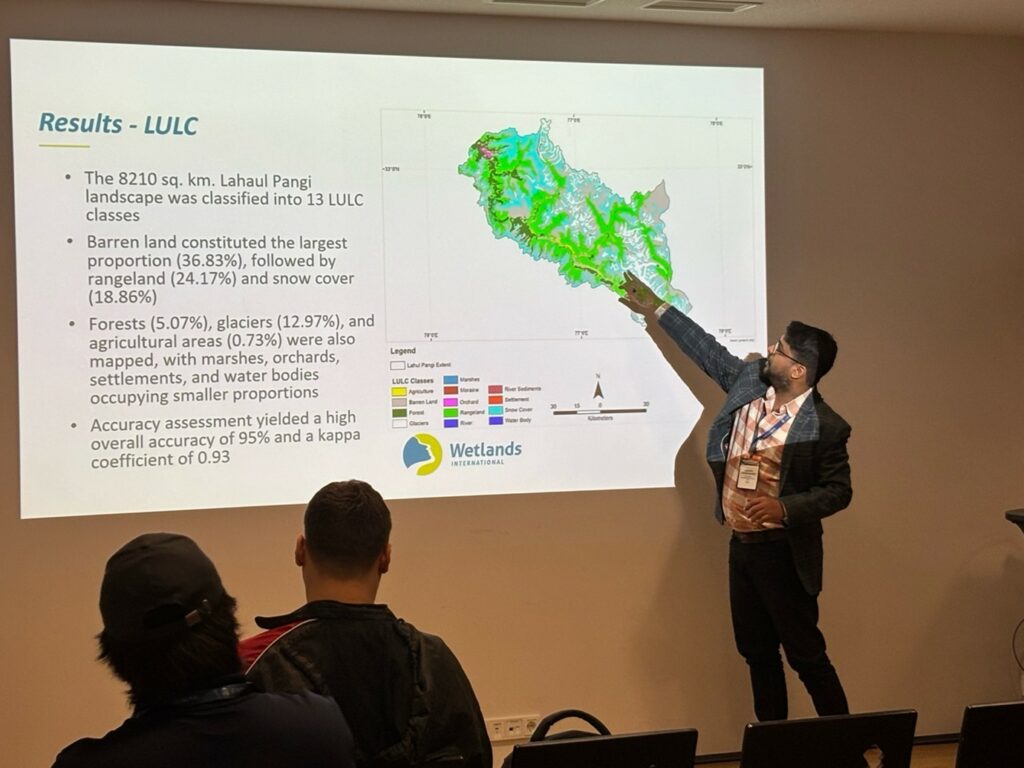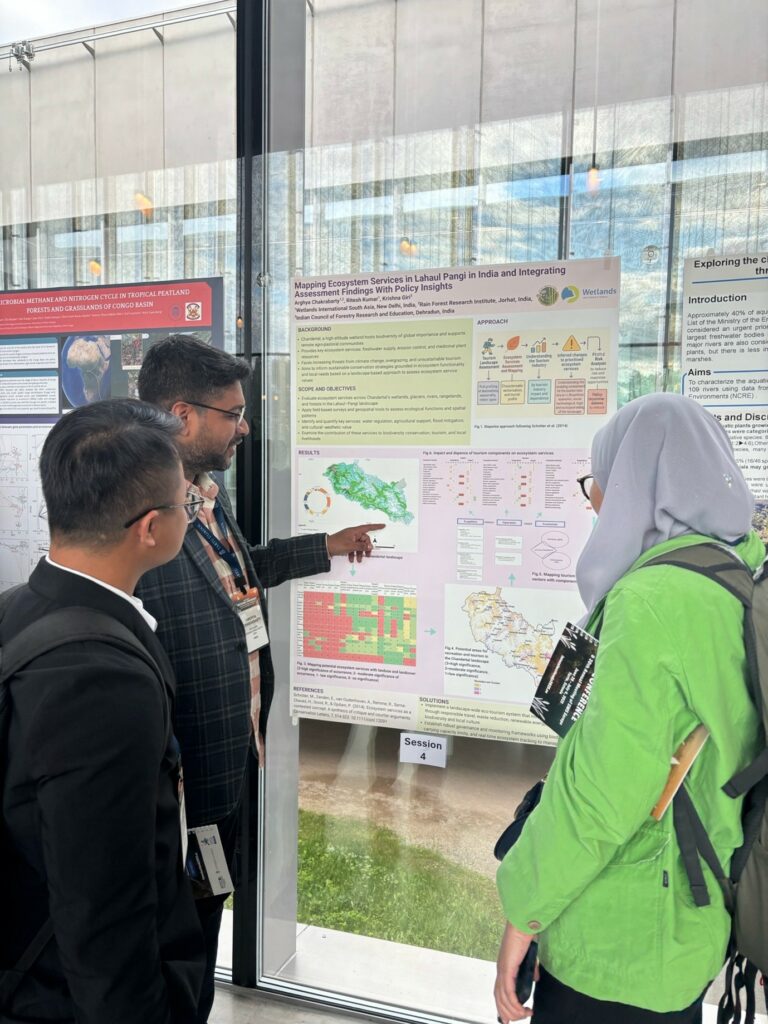
Balancing Tourism and Biodiversity: Wetlands International South Asia Advances Ecosystem Service Integration at INTECOL 2025, Tartu
-
Capacity development
-
Community resilience
-
Healthy Wetland Nature
-
Wetland values, status and trends

The 12th INTECOL Wetlands Conference brought more than 300 researchers, practitioners and policy actors to the University of Tartu, Estonia, from 29 June to 4 July 2025. Set amid Estonia’s extensive bogs and fens, the meeting provided a timely forum for advancing wetland science and governance in the face of accelerating climate and socio-economic change.
Structured around nine cross-cutting thematic tracks spanning social and economic dimensions, hydrology, biogeochemistry, ecological restoration, monitoring, and peatland science, the programme combined plenary lectures, symposia, workshops, and field excursions to regional peatlands and floodplains. The “Social and Economic Aspects” theme, which examines ecosystem service accounting, governance innovations, and community rights, served as the principal platform for Wetlands International South Asia’s contributions.

On 30 June, Arghya Chakrabarty (Technical Officer – Biodiversity) presented “Evaluating the Economic and Environmental Impact of Tourism on Biodiversity and Ecosystem Services in the Lahaul–Pangi Landscape, India.” The study reveals that while tourism generates USD 27 million annually and supports 2,700 jobs, it simultaneously strains glacier-fed freshwater systems, degrades alpine habitats, and threatens farmland that sustains 171 tribal communities. Modelling shows that a high-value, low-impact tourism regime, featuring tiered fees, eco-guiding, infrastructure setbacks, and waste controls, can retain over 80% of revenue while halving ecological risk. The findings reinforce the need for carrying capacity–based tourism regulation and for embedding ecosystem service valuations into state policy, advancing Wetlands International South Asia’s GEO BON 2023 call for whole-of-government accountability.
Complementing the talk, Chakrabarty presented “Mapping Ecosystem Services in Lahaul–Pangi and Integrating Assessment Findings with Policy Insights.” Using Sentinel-2 imagery, integrated modelling, expert consultations, and field validation, the study mapped key land systems and scored 15 ecosystem services across a 1-3 matrix. Findings highlight glacier-fed wetlands, rangelands, and 6,000 hectares of cropland as critical to water security, climate regulation, and livelihoods, with tourism concentrated in ecologically sensitive areas.

Throughout the week, the Wetlands International South Asia delegation engaged in symposia on wetland restoration pathways, remote sensing advances, and indigenous stewardship, forging collaborative links with research groups from Europe, South America, and Southeast Asia. Discussions focused on scaling Himalayan ecosystem‑service accounting to other mountainous regions and aligning valuations with emerging “Rights‑of‑Wetlands” legal instruments. These exchanges, together with Soomaa National Park’s field demonstrations of peatland rewetting and paludiculture pilots, will inform the organisation’s ongoing efforts to weave economic evidence into policy dialogues in India.
The Tartu conference thus served as a strategic milestone, both consolidating Wetlands International South Asia’s leadership in ecosystem-service valuation and advancing a pragmatic agenda for reconciling tourism-driven growth with high-altitude wetland conservation.
